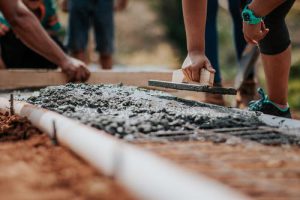
Understanding and Resolving underpinning issues
It is crucial to underpin traditional brick buildings which have block walls made of concrete. However, underpinning a home can either be a simple complex, lengthy and lengthy procedure, or a much trickier alternative that is less easy. An easy approach is just carrying out repairs within all the surrounding areas of the house as well as ensuring the floor covering is kept in good condition, using the simplest coping techniques and filling in any foundations that are required. This approach to underpinning the structure is economical which leaves the construction company free to continue building. But it is important to keep in mind the risks that must be taken into consideration when undertaking any kind of exterior repair . Therefore, this is not an option to repair minor issues.
An unsound underpinning could cause danger for anyone that is located near to the foundations. If a policy for home insurance is bought, there will usually be an exclusion provision in which it states that the insurance doesn’t provide protection for the consequences of injuries sustained even if your property has subsided due to outside influences. The clause can make house insurance quite expensive if not in the policy.
There are two major methods to insure your property against the risks of subsidence – the traditional approach and the latest alternative. Traditional approaches take into consideration the daily average groundwater rate for the particular property. This is assuming that the properties water table will be constant all through its existence. The report provides an estimate of how much it would cost to restore the structure during its lifespan. The average repair cost will increase as more factors like soil, air and natural cracks, can cause walls to break or collapse.

Instead of paying for all repairs and expenses You can consider alternatives to how your home insurance may save you money. The most significant risk to insurers is that a majority of houses will fall into a low state following a major storm. Even though flooding damage is not the biggest threat for your property but the floor is much more susceptible to damage caused by strong winds, ice and snow. Insurance companies will protect you from subsidence from storm surges and subsidence caused by shifting pressure in the ground in the event that your home is built on an unsupported floor. Insurance companies will typically add emergency accommodation to their coverage, therefore should you need additional accommodations, they will cover you.
Substrate problems can result in various consequences on insurance rates. One of the most challenging is when subsistency occurs through cracks appearing or other abnormal soil movements. This can cause damage to the structural integrity of your walls, even if it is only minor. The winter months can be particularly challenging because of the possibility that ground slopes could collapse due to colder weather. Drains might also be obstructions due to debris or tree roots. To prevent destruction to your foundations, and minimize disruption to your home’s interior, is necessary to repair or replace foundations in a hurry.
Concrete foundations are more susceptible to wear and tear. Cracks and blocks could develop under the slab’s surface. They can be minor problems like blockages due to the flow of water or more serious concerns, such as the shifting of concrete slabs for structural use. Substantial subsidence is also risky. It can be due to soil shifting, or shifting the positions of supporting beams that are the main ones. If your foundations are situated on the flat surface, your home will likely sink at an angle to the road or to the river.
You may be able keep some of the floor that was originally used as an underpinning layer in case your soil is adequate. In this way, you’ll enjoy a constant waterproof layer between the floor and the newly constructed house. To prevent water from infiltrating from the floor, use the buffer to create a space between your new basement floor as well as any surrounding soil.
You can also fix the basement floor to match the soil. You could alternatively simply change all of the concrete you have penetrated with engineered solidfill – it will reduce the work required for cleanup of the subsidence, and also allow the soil to shrink and settle quicker. The costs for both these options will vary according to the level of complexity involved in your design, the style of home you reside in, as well as the extent and severity of structural problems you confront. Most of the time, it will be wiser to take care to iron out any necessary structural issues early rather than later.


